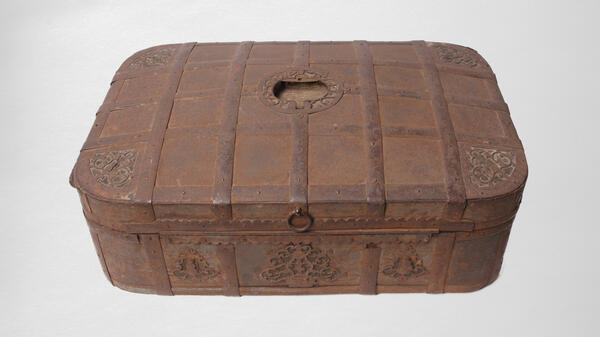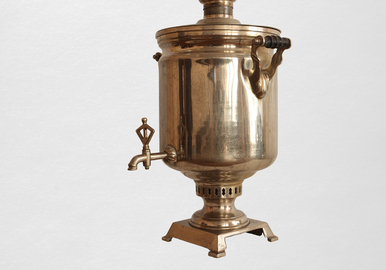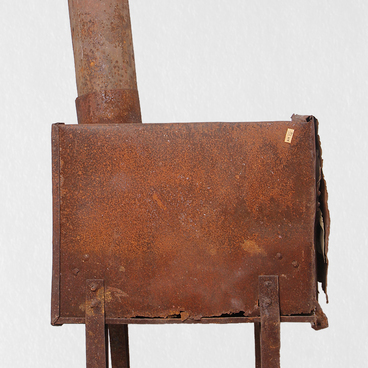At first, entrepreneurs were permitted to mine gold in Mariinsk district, while in the other territories of the Kuznetsky krai only government enterprises had the right to do it. That brought plenty of ‘adventurous people’ — gold prospectors who wanted to become rich — to Mariinsk. Later, many of them became merchants. By the middle of the 19th century, about a quarter of the town population was engaged in trade. As a result, Mariinsk became a trading center.
In 1826, the government decided to grant permission for gold mining in Siberia to some big businessmen. Merchant search parties followed the gold prospectors into the taiga. In 1828, the group of Andrey Popov and his nephew Fedot discovered gold deposits along the Kiya, the Berikul, and other rivers.
The metal chest housed in the museum dates back to the gold fever in Siberia. It was used to store and transport gold. The chest is rectangular, with rounded corners and a raised flap lid. An unknown master decorated it with a checkerboard pattern of metal plates. These stripes are attached to the wooden base with numerous rivets.
Inside the sections on the front, back, and sides, the master forged decorative floral ornaments — three on each side. He decorated the center of each side with a larger pattern. The ornament at the edges of the box lid slightly differs from the one on the sides in shape and pattern.
There is a circle with a floral ornament and a hole that reaches the wooden cover at the center of the lid. Internal locks are embedded in the side ornaments on the front of the chest.
The master placed metal handles on the sides so that the chest was easy to carry. They are C-shaped and attached with rivets. The space under the handles is also decorated with a floral ornament. The chest bottom is not covered with a metal sheet, but there are metal plates laid down in a checkerboard pattern.
In 1826, the government decided to grant permission for gold mining in Siberia to some big businessmen. Merchant search parties followed the gold prospectors into the taiga. In 1828, the group of Andrey Popov and his nephew Fedot discovered gold deposits along the Kiya, the Berikul, and other rivers.
The metal chest housed in the museum dates back to the gold fever in Siberia. It was used to store and transport gold. The chest is rectangular, with rounded corners and a raised flap lid. An unknown master decorated it with a checkerboard pattern of metal plates. These stripes are attached to the wooden base with numerous rivets.
Inside the sections on the front, back, and sides, the master forged decorative floral ornaments — three on each side. He decorated the center of each side with a larger pattern. The ornament at the edges of the box lid slightly differs from the one on the sides in shape and pattern.
There is a circle with a floral ornament and a hole that reaches the wooden cover at the center of the lid. Internal locks are embedded in the side ornaments on the front of the chest.
The master placed metal handles on the sides so that the chest was easy to carry. They are C-shaped and attached with rivets. The space under the handles is also decorated with a floral ornament. The chest bottom is not covered with a metal sheet, but there are metal plates laid down in a checkerboard pattern.



